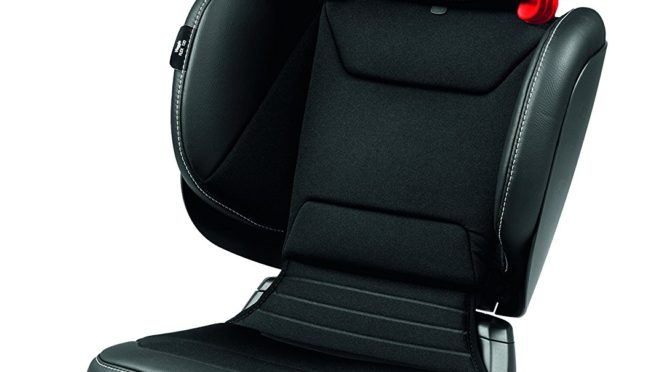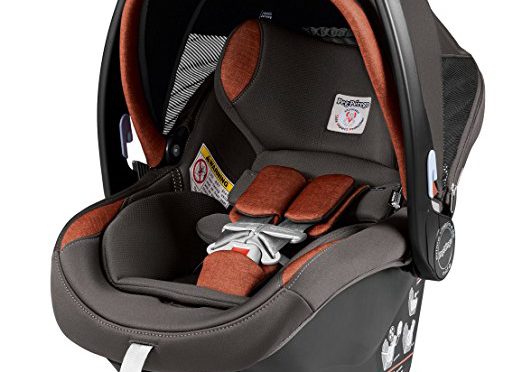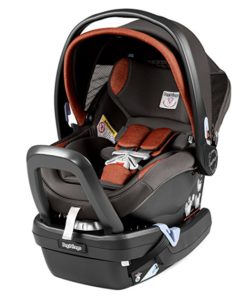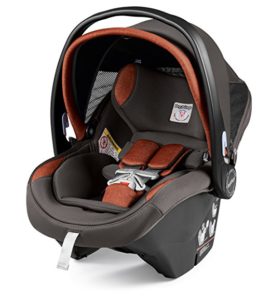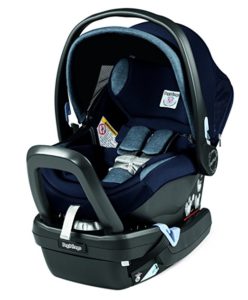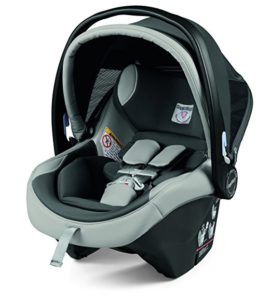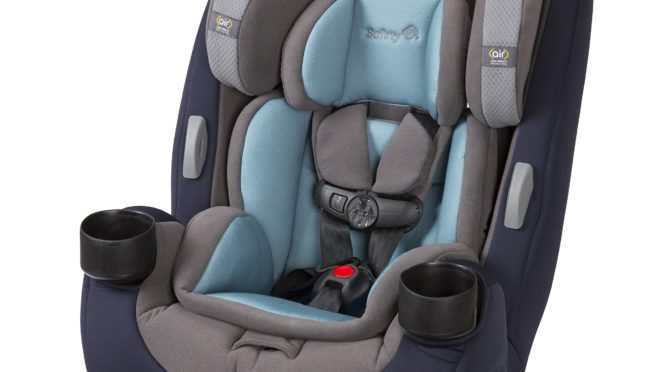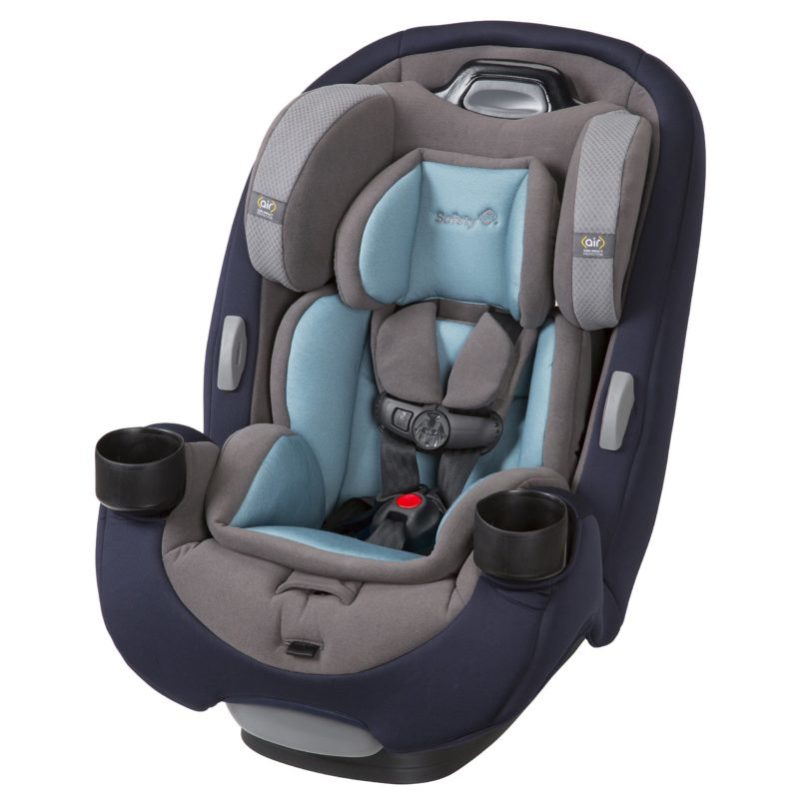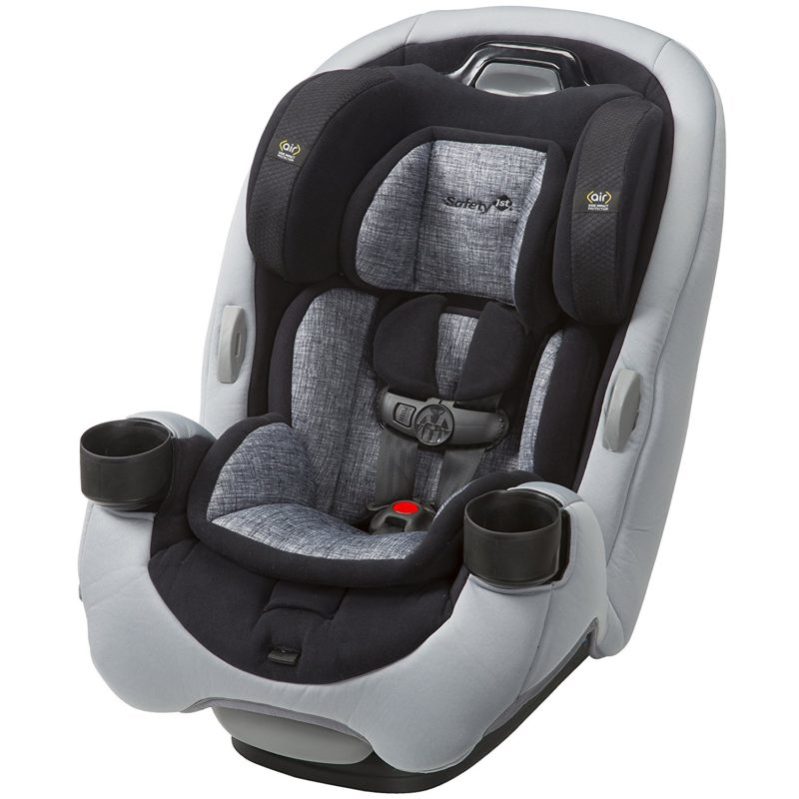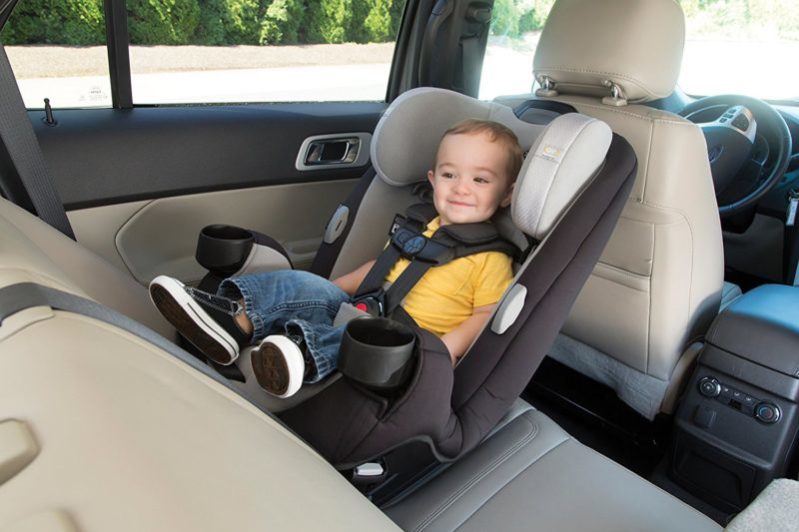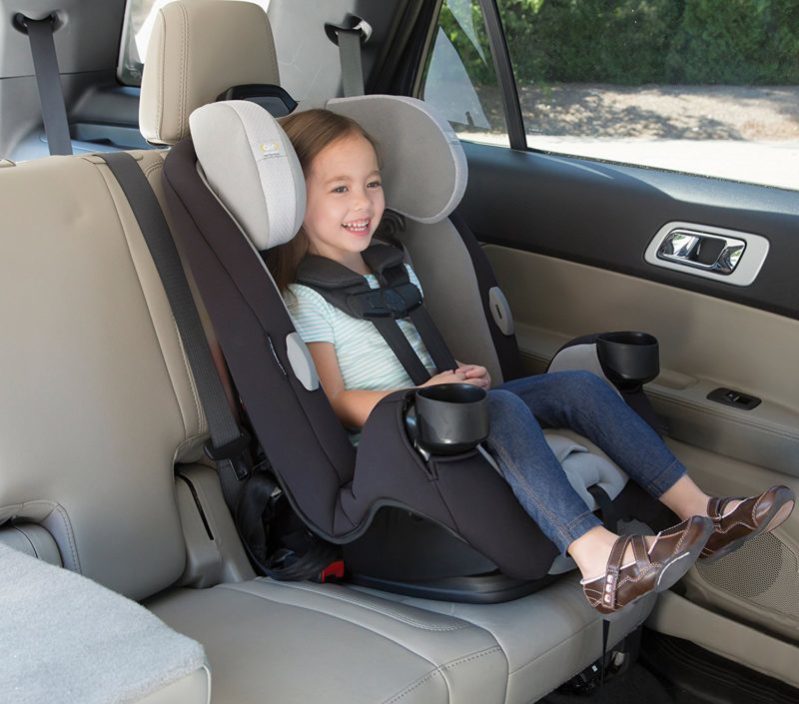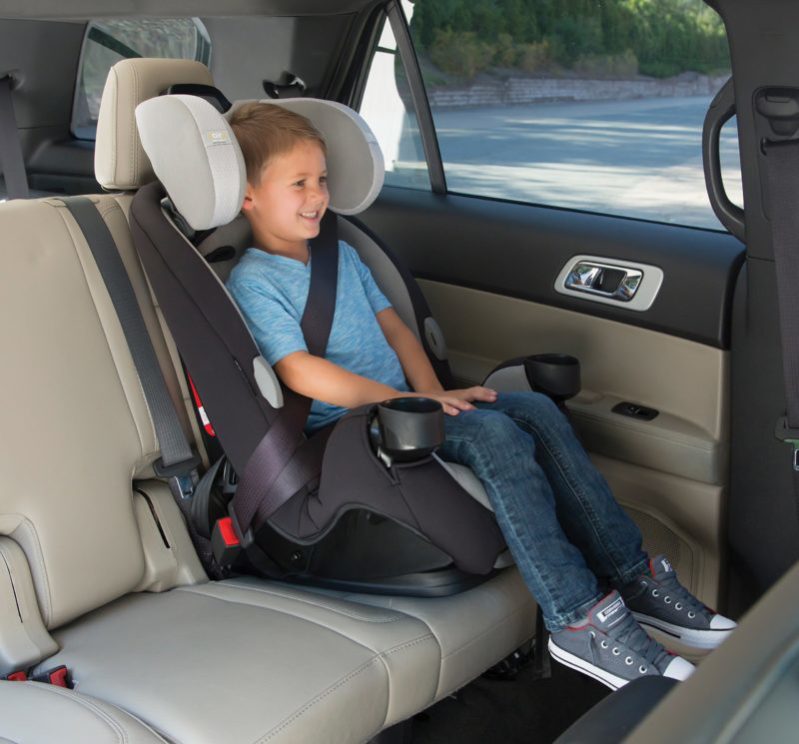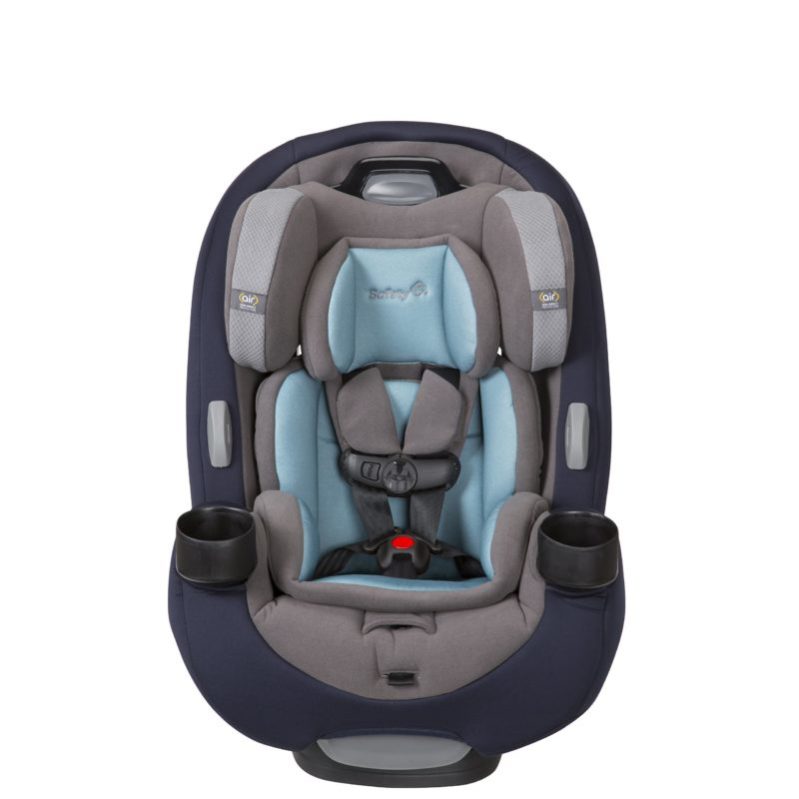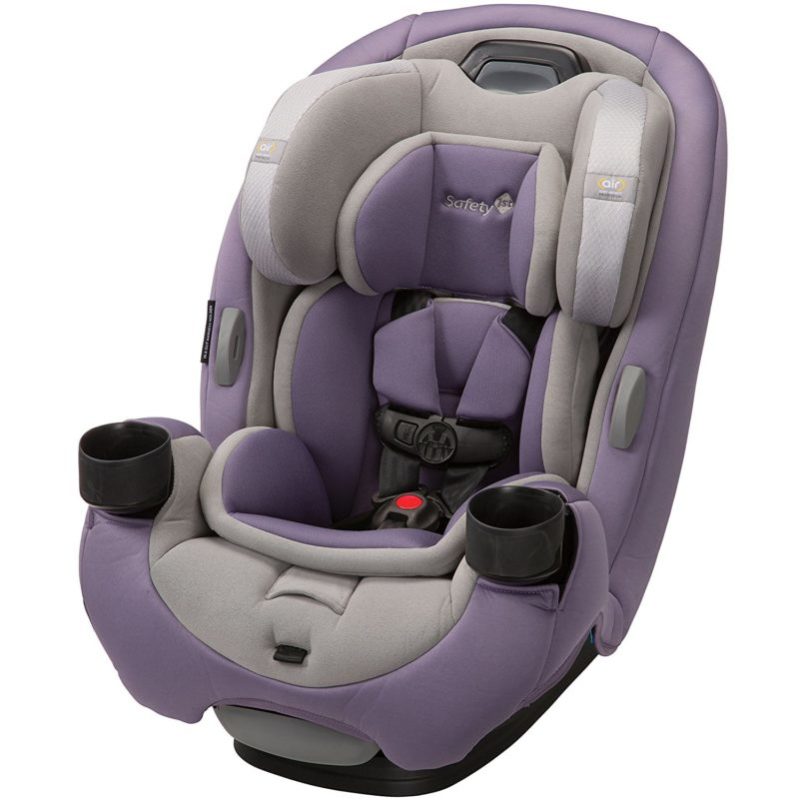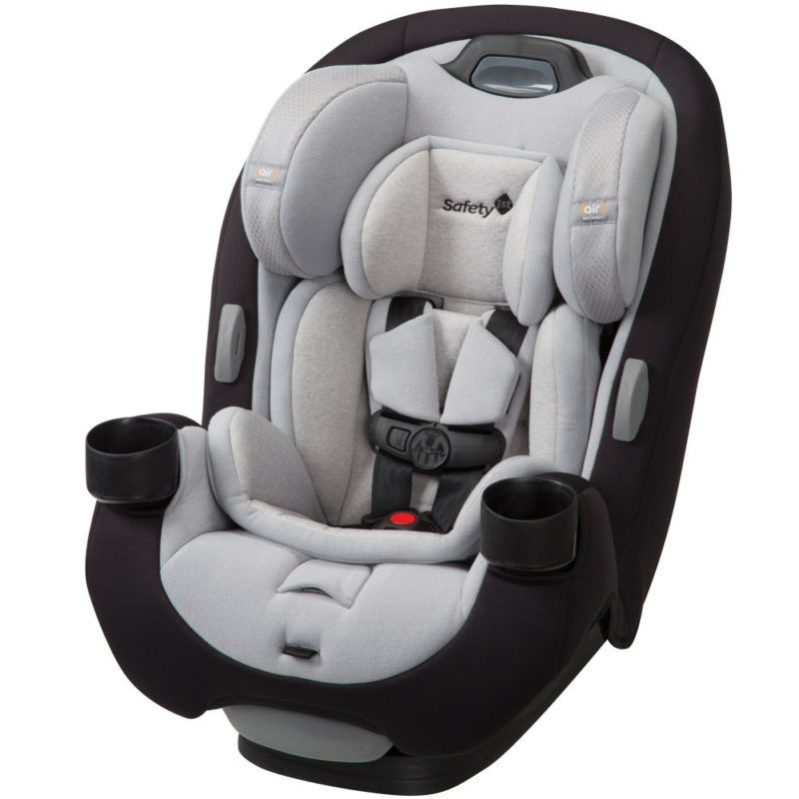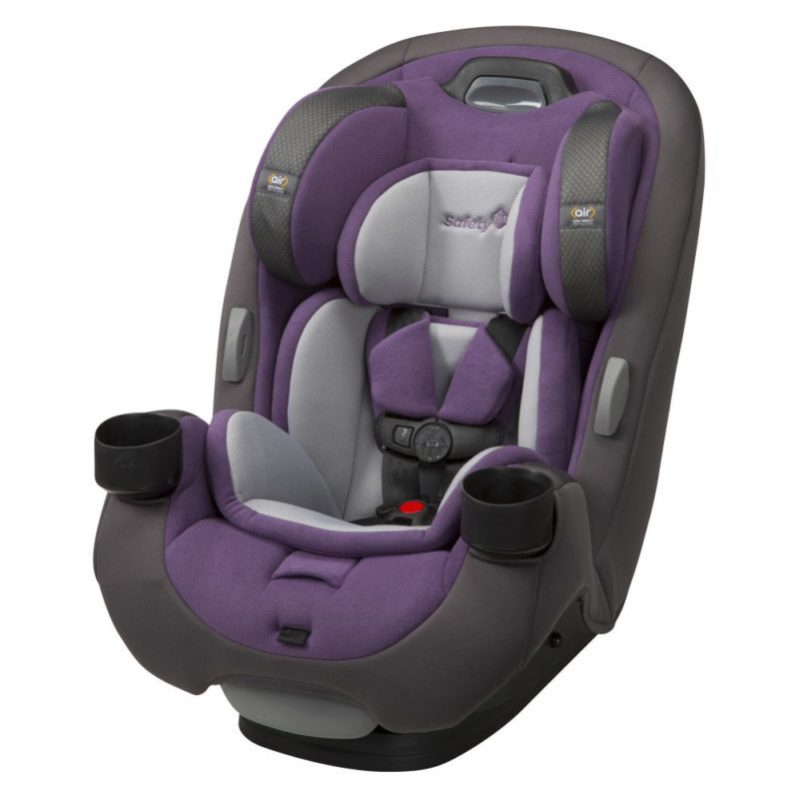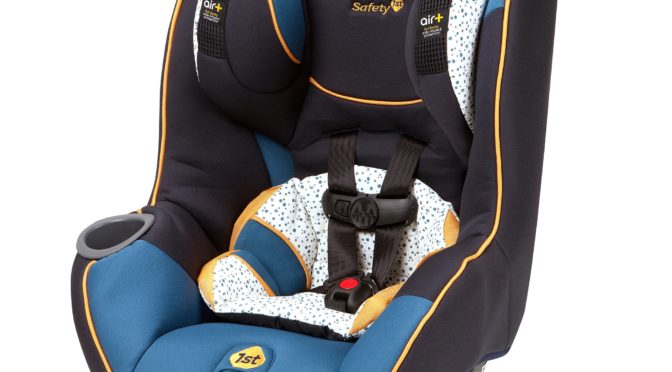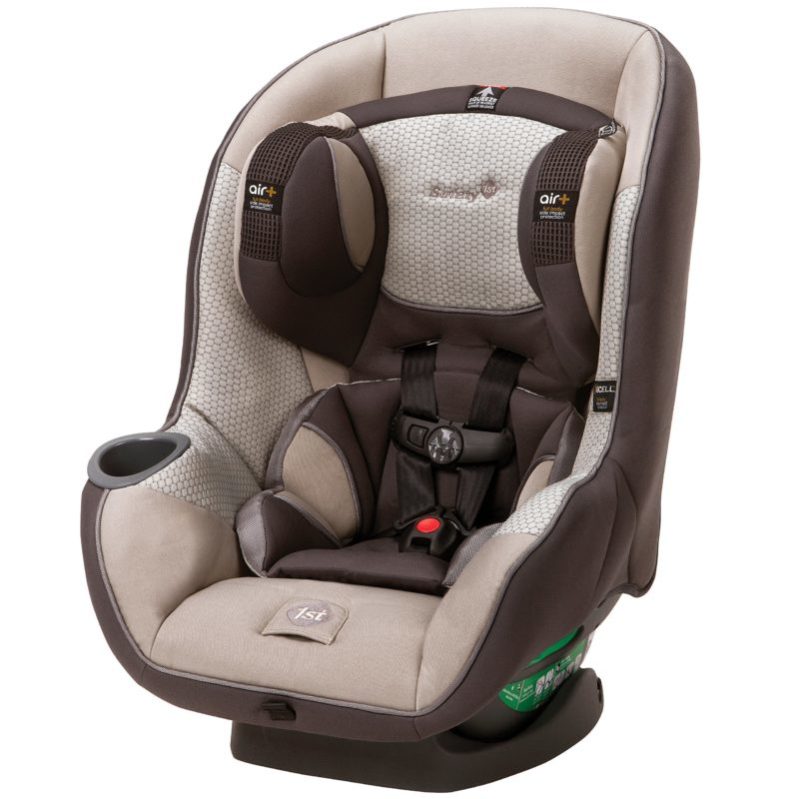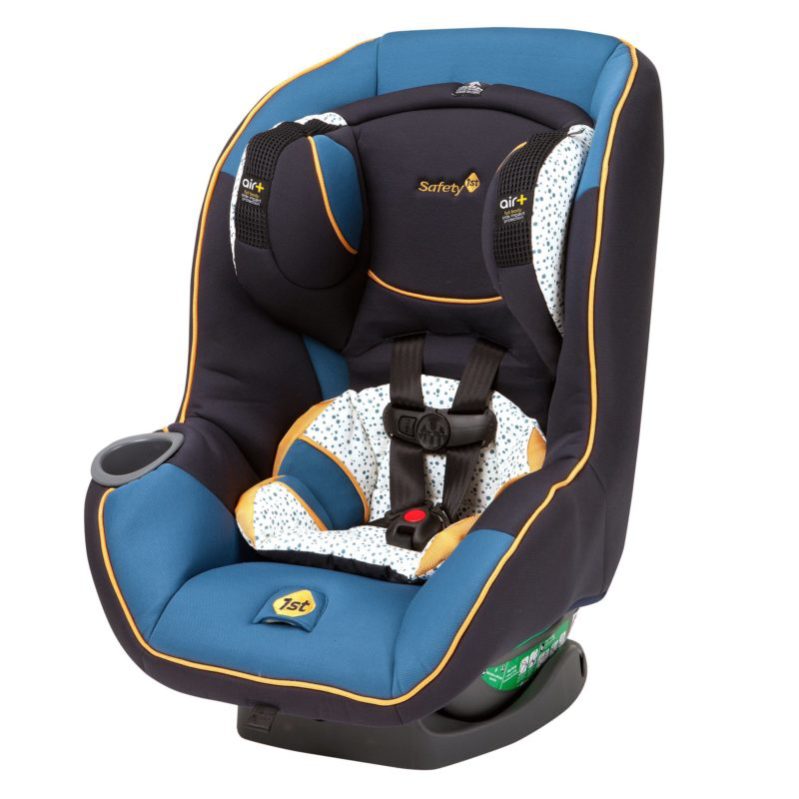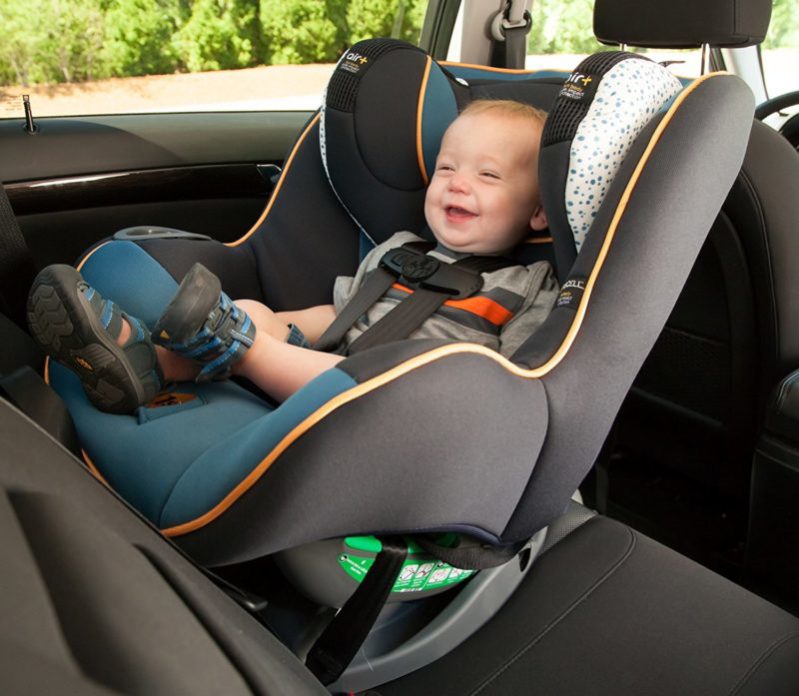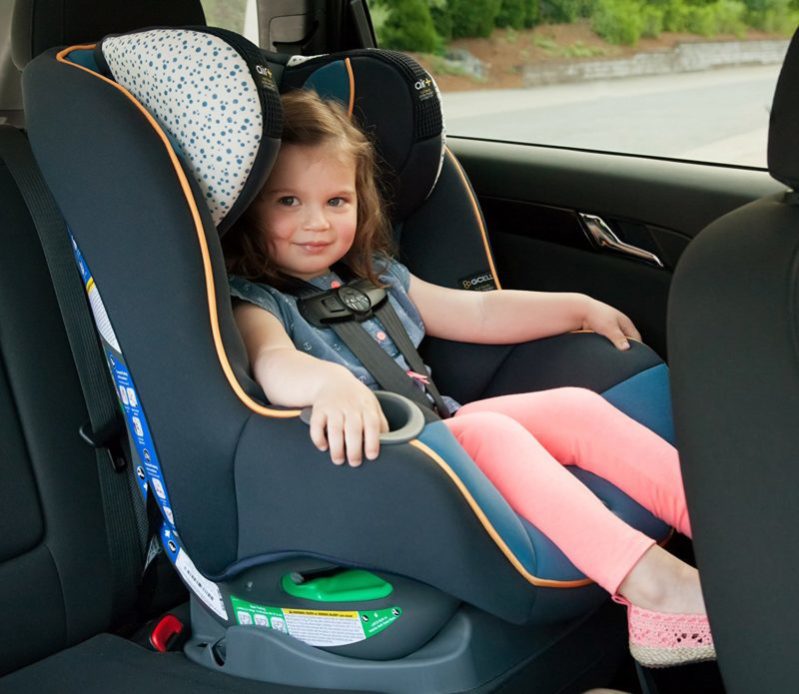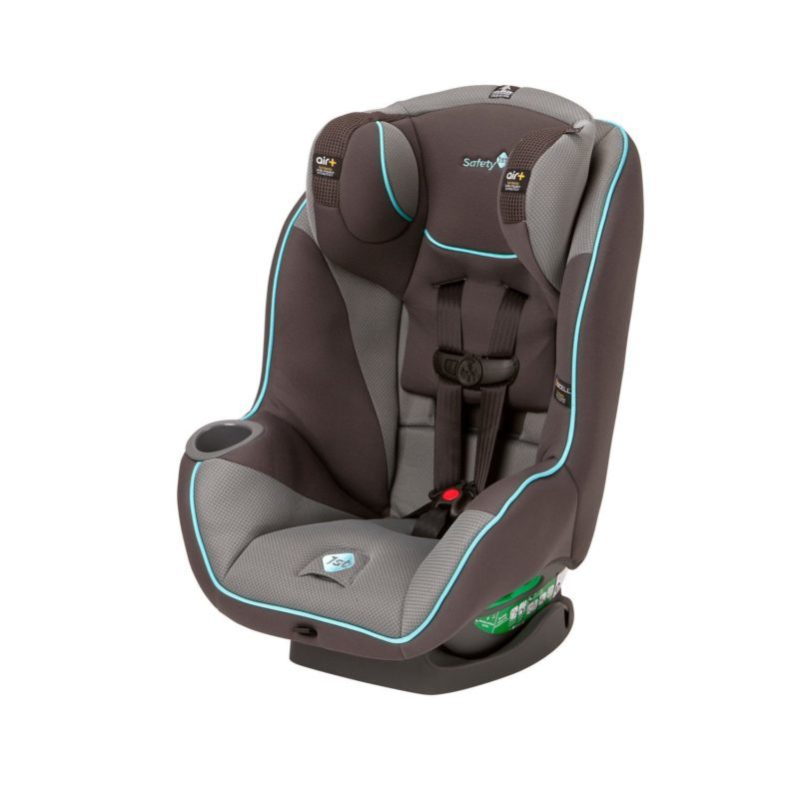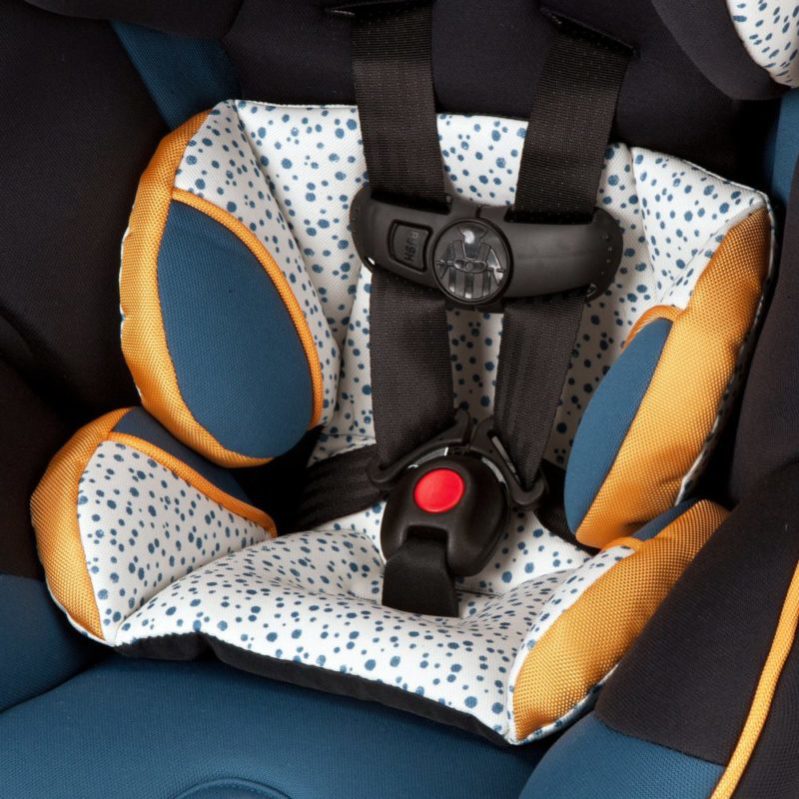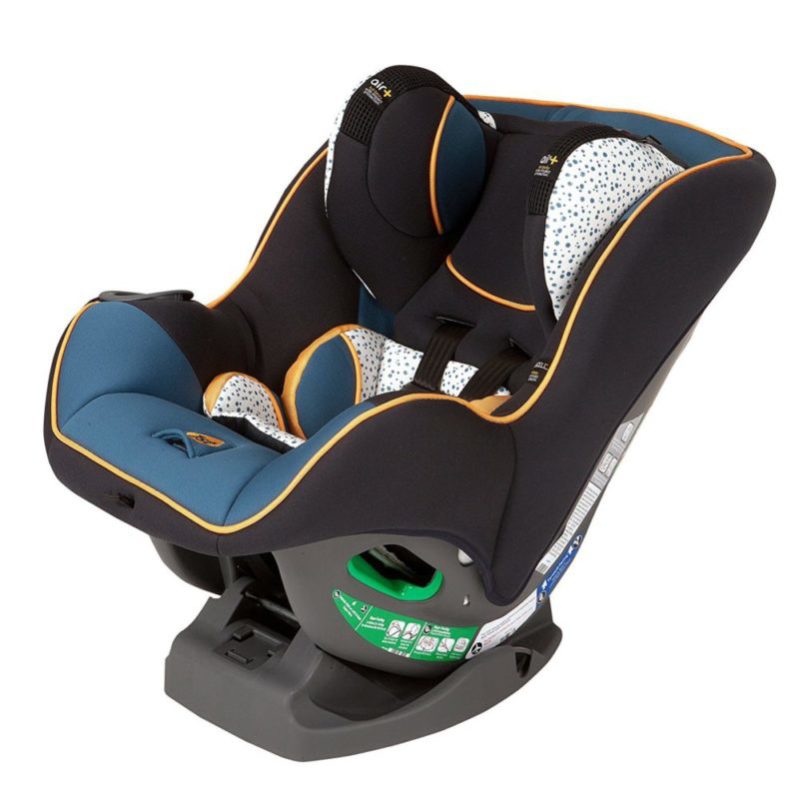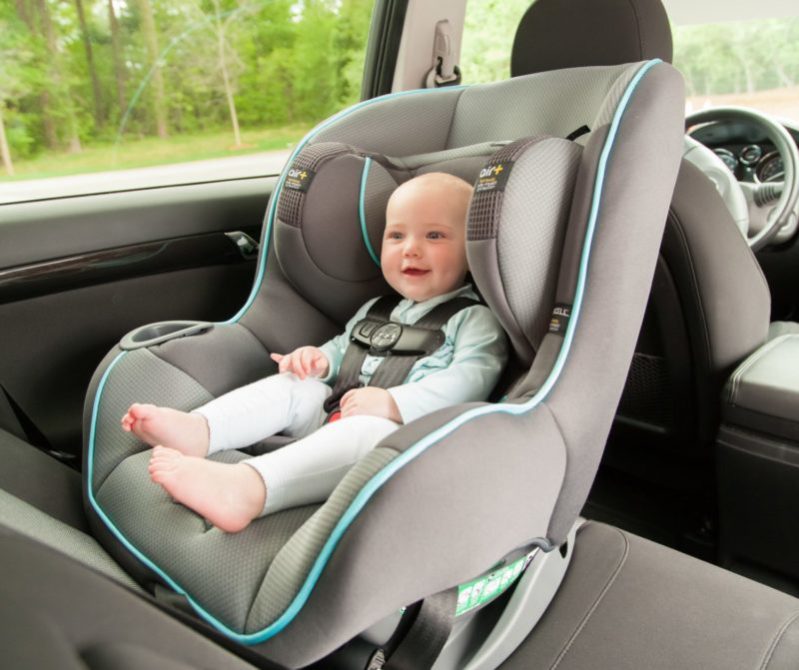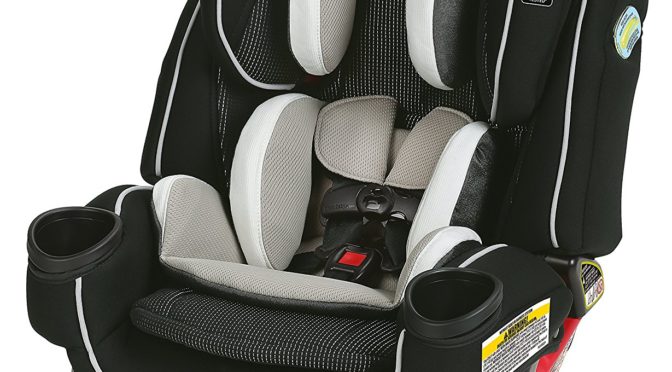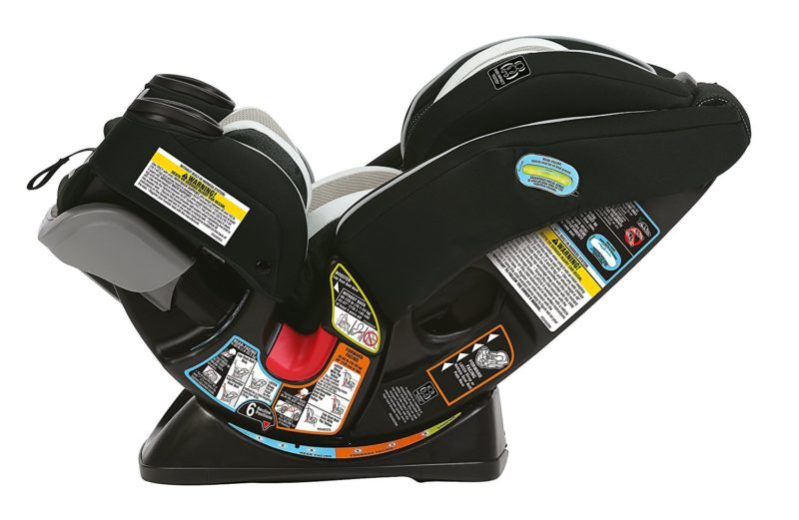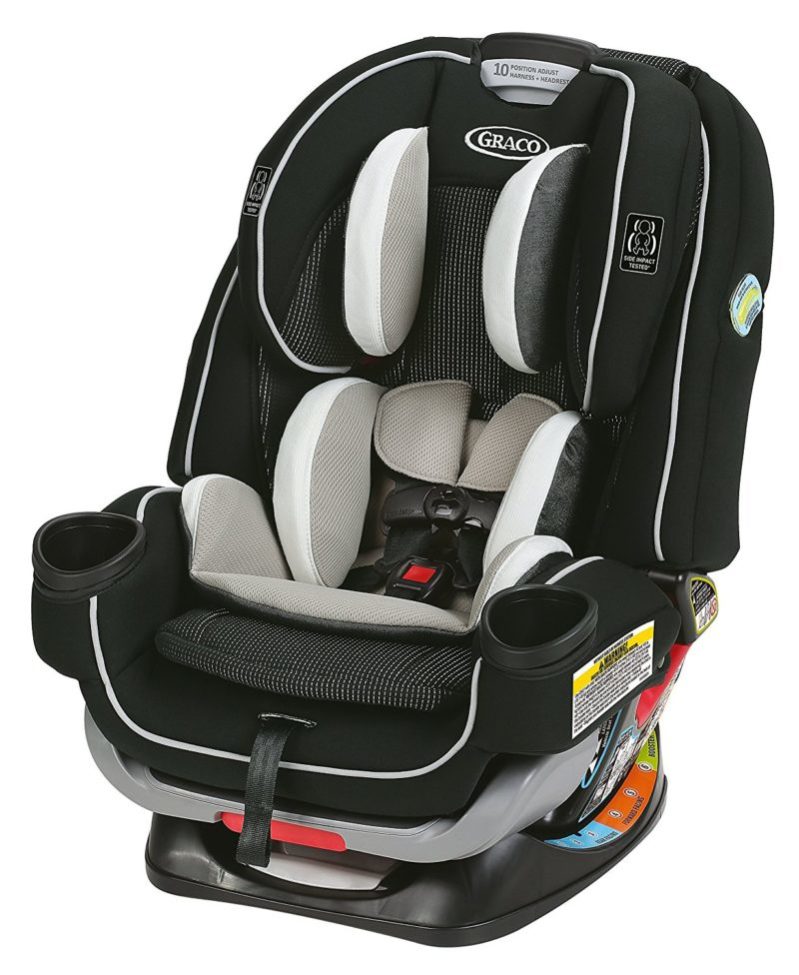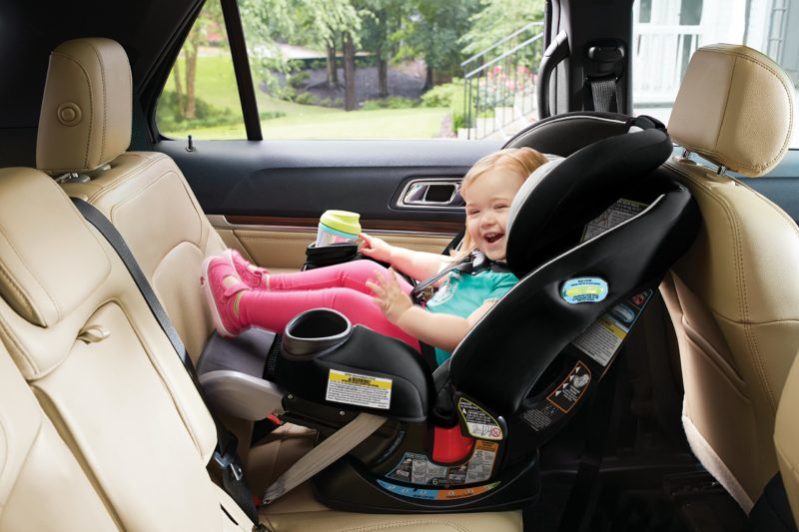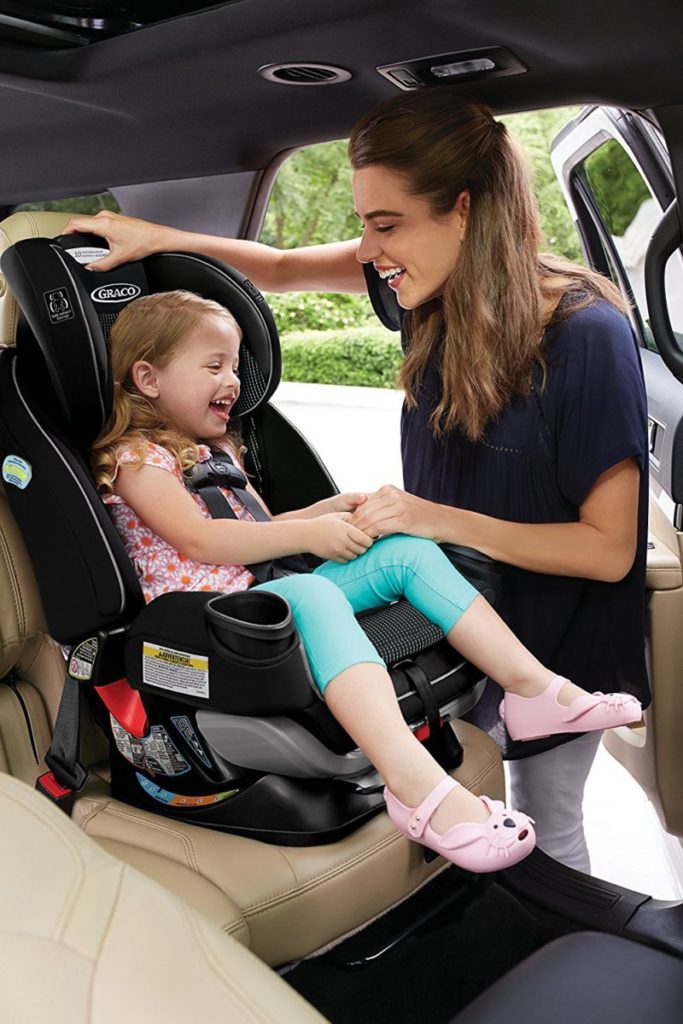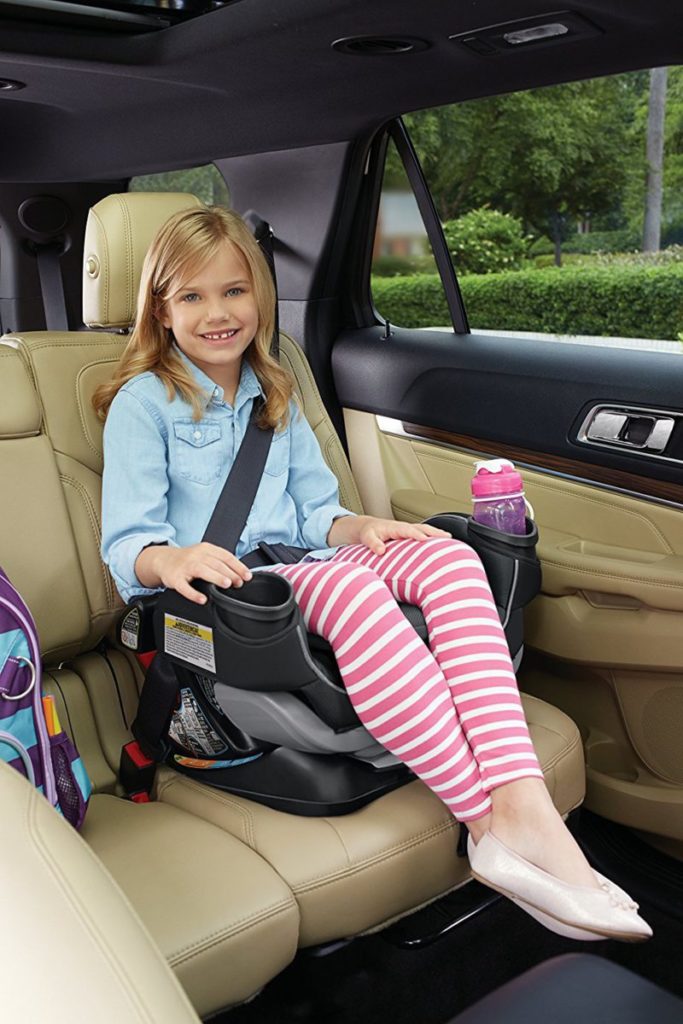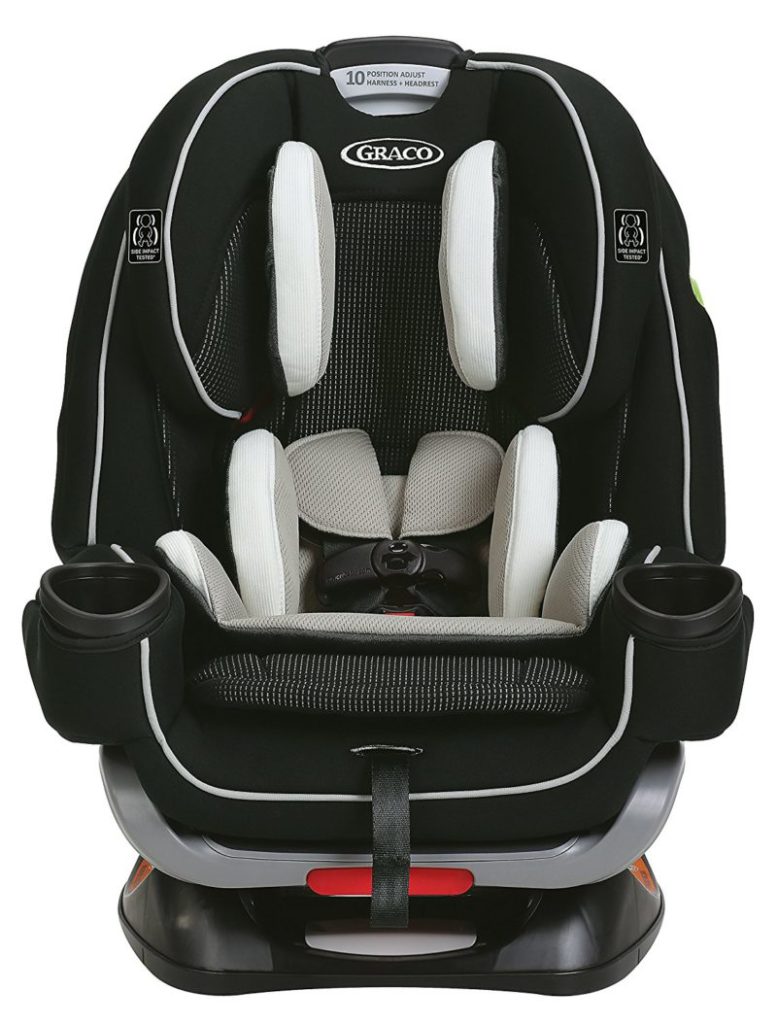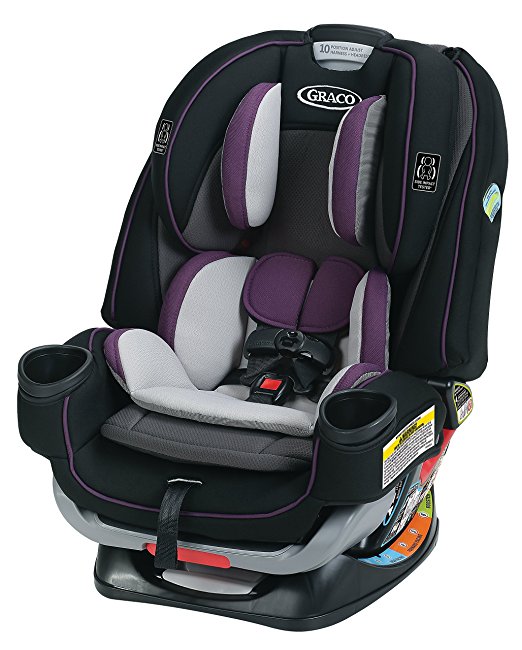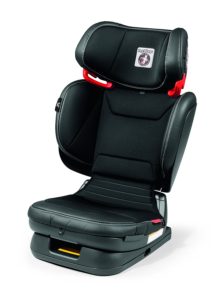
In car seat safety, best practices start with extended rear-facing (ideally until at least 4 or 5) and end with boostering (ideally until 10 to 12). While extended rear-facing is ultimately more important than boostering from a safety standpoint, keeping children properly boostered until they’re ready to use seat belts is still a key part of keeping them safely restrained in moving vehicles and an important way of preventing severe to potentially fatal internal injuries in collisions. Today we’re going to look at one of Peg Perego’s newest car seats, the Peg Perego Viaggio Flex 120 high back booster. It’s essentially an update to the Peg Perego Viaggio HBB 120 booster I reviewed years ago and a strong competitor to the Maxi-Cosi RodiFix and Clek Oobr in the growing market of luxury European and Canadian high-back boosters. Let’s see how it stands up to the competition.
Peg Perego Viaggio Flex 120 – What’s the big deal?
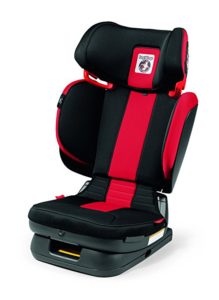 The Peg Perego Viaggio Flex 120 is a high-back booster seat by Italian car seat maker Peg Perego and an update of sorts to their successful Viaggio HBB 120 booster seat. It comes with a long list of some rather amazing features. First of all, it’s one of the absolute tallest booster seats on the market. It’s tall enough that pretty much any child who uses it is likely to be able to use it until s/he no longer needs a booster seat of any kind. Additionally, it’s capable of stretching out wide or shrinking in narrowly. With three width modes, the shoulders can accommodate children of a wide variety of sizes while shrinking down enough to make 3 across installations feasible in small cars. On top of this, it’s reclinable, and can be reclined while installed and by the child using the seat. But wait…there’s more. It can also be folded down to a backpack-sized package that makes it easy to carry with you from vehicle to vehicle or stow in storage bins when traveling by airplane. And finally, like the Clek Oobr, it also includes rigid lower LATCH anchors that make it unnecessary to buckle in the seat when unoccupied to keep it from turning into a projectile during a crash.
The Peg Perego Viaggio Flex 120 is a high-back booster seat by Italian car seat maker Peg Perego and an update of sorts to their successful Viaggio HBB 120 booster seat. It comes with a long list of some rather amazing features. First of all, it’s one of the absolute tallest booster seats on the market. It’s tall enough that pretty much any child who uses it is likely to be able to use it until s/he no longer needs a booster seat of any kind. Additionally, it’s capable of stretching out wide or shrinking in narrowly. With three width modes, the shoulders can accommodate children of a wide variety of sizes while shrinking down enough to make 3 across installations feasible in small cars. On top of this, it’s reclinable, and can be reclined while installed and by the child using the seat. But wait…there’s more. It can also be folded down to a backpack-sized package that makes it easy to carry with you from vehicle to vehicle or stow in storage bins when traveling by airplane. And finally, like the Clek Oobr, it also includes rigid lower LATCH anchors that make it unnecessary to buckle in the seat when unoccupied to keep it from turning into a projectile during a crash.
Beyond all of these impressive feats, it’s still a standard high-back booster, which means you can use it once your child stops rear-facing (e.g., at 4 or later if possible, as in Sweden) or forward-facing and booster your child until s/he is old enough to use a vehicle’s seat belts without a car seat (e.g., most often between ages 10 and 12 when s/he can pass the 5-step test). Smooth, stylish, and minimal, the Flex 120, like other Peg Perego car seats, is made in Italy, and is a seat you’ll be happy to use again and again.
Peg Perego Viaggio Flex 120 Limits for Weight and Height
High-back booster: 40-120 pounds. Best practices suggests children should not be placed in booster seats as infants or toddlers, but when they’re at least 4-5 years old. Your 4 or older preschooler may be able to use a booster seat if exceptionally responsible, but many parents will have more success if they wait until their children are at least 5 (e.g., kindergartners in the US); it’s fine to wait until 6 or 7 to start using it if you feel your children aren’t ready yet. The height range spans 39 to 63 inches while the highest belt guide position stops at 22 inches; you don’t need to have a head restraint in the car to use it. The Flex 120 does not include a backless mode.
Buy the Peg Perego Viaggio Flex 120 on Sale at Amazon here.
Dimensions and Key Features of the Peg Perego Viaggio Flex 120
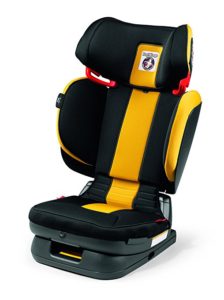 The Viaggio Flex 120 is 14 inches wide when measured at the base. In narrow mode, it measures 17 inches across at the shoulders, while in wide mode, it spreads to 20 inches wide. It weighs just under 15 pounds (14.8, to be precise). Its narrow width means it will be one of the best choices on the market for a narrow booster for 3 across car seat installations. The Flex 120 features a 12 year lifespan based on the date of manufacture; this is one of the longest expiration dates in the industry and is yet another reason it’s a great choice for families looking to save money in the long term on car seats. The manufacturing date can be found on a label beneath the seat. As is the case with every booster seat, the Flex 120 cannot be used on aircraft, per the FAA, as it needs a lap and shoulder seat belt, while planes only come with lap belts.
The Viaggio Flex 120 is 14 inches wide when measured at the base. In narrow mode, it measures 17 inches across at the shoulders, while in wide mode, it spreads to 20 inches wide. It weighs just under 15 pounds (14.8, to be precise). Its narrow width means it will be one of the best choices on the market for a narrow booster for 3 across car seat installations. The Flex 120 features a 12 year lifespan based on the date of manufacture; this is one of the longest expiration dates in the industry and is yet another reason it’s a great choice for families looking to save money in the long term on car seats. The manufacturing date can be found on a label beneath the seat. As is the case with every booster seat, the Flex 120 cannot be used on aircraft, per the FAA, as it needs a lap and shoulder seat belt, while planes only come with lap belts.
Using the Peg Perego Viaggio Flex 120 (Seat belt installation, LATCH anchors, and additional FAQ)
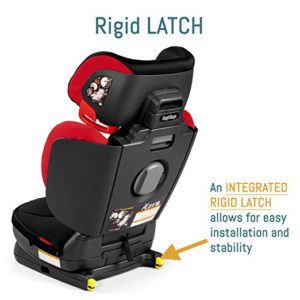 Installation: The Flex 120 takes seconds to install; you simply place it on your vehicle’s seat, attach the lower LATCH anchors, flip the seat upright, and work your vehicle’s seat belt through the Flex’s belt guide and click it in. It takes about four seconds to get it set up. The LATCH anchors, as noted above, are not to secure your child to the booster seat; they are to secure the booster seat to your vehicle when it hasn’t been buckled. You’ll still need to buckle your child (or your child will still need to buckle himself or herself) each time the seat is to be used.
Installation: The Flex 120 takes seconds to install; you simply place it on your vehicle’s seat, attach the lower LATCH anchors, flip the seat upright, and work your vehicle’s seat belt through the Flex’s belt guide and click it in. It takes about four seconds to get it set up. The LATCH anchors, as noted above, are not to secure your child to the booster seat; they are to secure the booster seat to your vehicle when it hasn’t been buckled. You’ll still need to buckle your child (or your child will still need to buckle himself or herself) each time the seat is to be used.
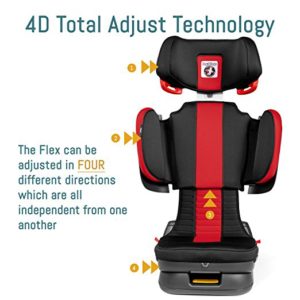 Child fit: The Flex 120 is likely to fit children of all shapes and sizes, especially with its mammoth 22 inch belt guide limit. There’s a large knob on the back of the seat that you can turn to adjust the shoulder width to fit kids of different dimensions. Position one is narrow, position two is medium, and position three is wide. And with a 63″ height limit and a 120 pound weight limit, virtually every child who has not yet passed the 5-step test for seat belt readiness will be able to fit inside the Flex 120 until s/he’s ready to go without it. As noted above, you can also adjust the recline of the seat; there’s a handle that your child can pull or that you can adjust, and with it, your child will can sleep more comfortably. It’s a handy feature for road trips, tired children, or simply kids looking to relax a bit while you’re traveling.
Child fit: The Flex 120 is likely to fit children of all shapes and sizes, especially with its mammoth 22 inch belt guide limit. There’s a large knob on the back of the seat that you can turn to adjust the shoulder width to fit kids of different dimensions. Position one is narrow, position two is medium, and position three is wide. And with a 63″ height limit and a 120 pound weight limit, virtually every child who has not yet passed the 5-step test for seat belt readiness will be able to fit inside the Flex 120 until s/he’s ready to go without it. As noted above, you can also adjust the recline of the seat; there’s a handle that your child can pull or that you can adjust, and with it, your child will can sleep more comfortably. It’s a handy feature for road trips, tired children, or simply kids looking to relax a bit while you’re traveling.
Cup holders: I’m not generally a fan of cup holders on car seats, as there’s numerous research linking constant snacking to childhood (and adult) obesity, but if you want them, there are two included with the seat. They’re a pair of plastic rings that slide out of the seat and slide back in when not in use. It’s worth keeping in mind that most European car seats don’t come with them (including the RodiFix), and for good reason.
Why Buy the Peg Perego Viaggio Flex 120?
In conclusion, while it would be lovely if it were a bit cheaper, the Viaggio easily meets the needs of a booster seat: it gives parents a safe way to transport children once they’re done extended rear-facing (or forward-facing if they were turned forward before 4 or 5) in a car, truck, SUV, or minivan. Kids can stay in the Flex until they’re ready to transition out of booster seats and into regular vehicle seats with seat belts (which typically won’t happen until most kids are between 10 and 12).
Due to its narrow width, it’s one of the most 3 across friendly booster seats available, and because it doesn’t include arm rests, younger children are highly likely to be able to buckle themselves in without getting stuck trying to navigate past the arm rest gauntlet. Like the RodiFix, it’s a safe, well-designed, and attractive car seat that can be one of only two or three seats your child ever needs (along with a convertible like the Clek Fllo for the first five years). The fact that it comes with a 12 year expiration date means it can conceivably be used with several children, dramatically decreasing its effective price compared to seats that cost less but become useless much sooner.
You can buy the Peg Perego Viaggio Flex 120 in 4 colors: Licorice, Monza, Daytona, and Crystal Black here. Canadians can buy it here, although it will unfortunately cost you more.
 If you find my information on best practices in car and car seat safety helpful, you can do your shopping through this Amazon link. Canadians can shop here for Canadian purchases. Have a question or want to discuss best practices? Join us in the forums!
If you find my information on best practices in car and car seat safety helpful, you can do your shopping through this Amazon link. Canadians can shop here for Canadian purchases. Have a question or want to discuss best practices? Join us in the forums!

